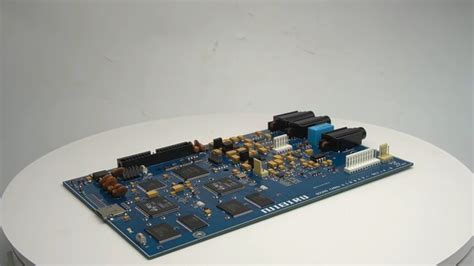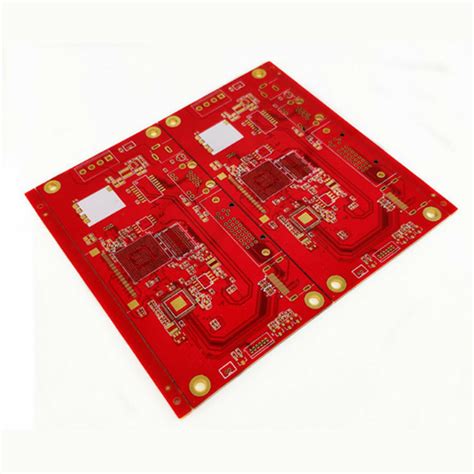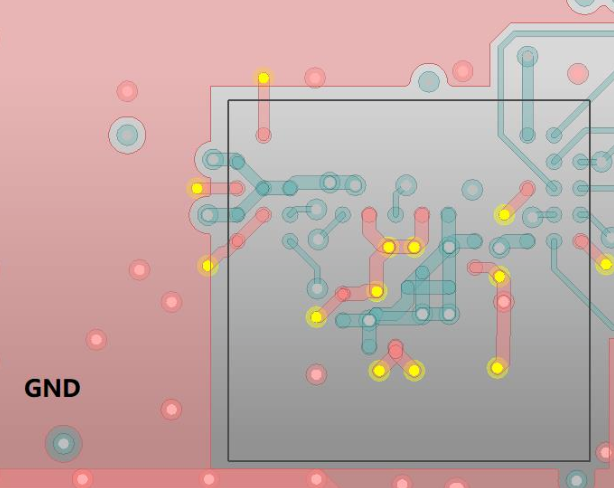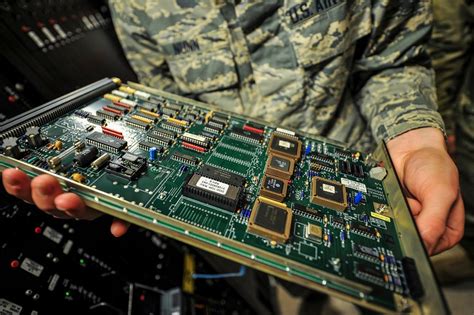Optimizing PCB Via Design: A Comprehensive Guide
Printed Circuit Boards (PCBs) are the backbone of modern electronics, and their design plays a crucial role in the performance, reliability, and manufacturability of electronic devices. Among the various aspects of PCB design, via design is one of the most critical yet often overlooked elements. Vias are the conductive pathways that connect different layers of a PCB, allowing signals and power to traverse the board efficiently. Poor via design can lead to signal integrity issues, power delivery problems, and even manufacturing defects. This article delves into the key considerations and strategies for optimizing PCB via design.
1. Understanding the Role of Vias in PCB Design
Before diving into optimization techniques, it is essential to understand the different types of vias and their roles in PCB design:
- Through-Hole Vias: These vias span the entire thickness of the PCB, connecting all layers. They are the most common type and are relatively easy to manufacture.
- Blind Vias: These vias connect an outer layer to one or more inner layers but do not go through the entire board. They are useful in high-density designs where space is at a premium.
- Buried Vias: These vias connect inner layers without reaching the outer layers. They are used in complex, multi-layer boards to save space and reduce signal interference.
- Microvias: These are small vias, typically less than 150 microns in diameter, used in high-density interconnect (HDI) designs. They can be blind, buried, or through-hole.
Each type of via has its own set of advantages and limitations, and the choice of via type depends on the specific requirements of the PCB design.

2. Key Considerations for Optimizing Via Design
2.1 Signal Integrity
Signal integrity is paramount in high-speed PCB designs. Poor via design can introduce impedance mismatches, signal reflections, and crosstalk, all of which can degrade signal quality. Here are some strategies to optimize vias for signal integrity:
- Impedance Matching: Ensure that the via’s impedance matches the characteristic impedance of the transmission line. This can be achieved by controlling the via’s diameter, pad size, and anti-pad (the clearance around the via in adjacent layers).
- Minimizing Stub Length: In high-speed designs, the stub (the unused portion of the via) can act as an antenna, radiating noise and causing signal reflections. Use back-drilling or blind/buried vias to minimize stub length.
- Via Shielding: In sensitive circuits, consider adding ground vias around signal vias to reduce crosstalk and electromagnetic interference (EMI).
2.2 Power Integrity
Power delivery is another critical aspect of PCB design, and vias play a significant role in ensuring a stable power supply. Poor via design can lead to voltage drops, increased resistance, and thermal issues. Here are some tips for optimizing vias for power integrity:
- Via Size and Quantity: Use larger vias or multiple vias in parallel to reduce resistance and improve current-carrying capacity. This is especially important for power and ground connections.
- Thermal Management: Ensure that vias used for power delivery are adequately sized to handle the thermal load. Consider using thermal vias to dissipate heat from power components.
- Decoupling Capacitors: Place decoupling capacitors close to the vias connecting power and ground planes to reduce noise and improve power stability.
2.3 Manufacturability
While optimizing for signal and power integrity is crucial, it is equally important to ensure that the via design is manufacturable. Complex via structures can increase manufacturing costs and lead to defects. Here are some considerations for optimizing via design for manufacturability:
- Aspect Ratio: The aspect ratio (the ratio of the via’s depth to its diameter) is a critical factor in manufacturability. High aspect ratio vias are more challenging to plate and can lead to voids or incomplete fills. Aim for an aspect ratio of 8:1 or lower for through-hole vias.
- Via Filling: In some cases, vias need to be filled with conductive or non-conductive material to improve reliability or facilitate surface mounting. Ensure that the via design is compatible with the chosen filling method.
- Design Rules: Adhere to the manufacturer’s design rules for via size, spacing, and placement. Violating these rules can lead to manufacturing defects or increased costs.
2.4 Thermal Management
Thermal management is a critical consideration in PCB design, especially in high-power applications. Vias can play a significant role in dissipating heat from components. Here are some strategies for optimizing vias for thermal management:
- Thermal Vias: Use thermal vias to transfer heat from power components to the ground plane or a dedicated thermal layer. These vias should be placed directly under the component’s thermal pad.
- Via Arrays: In high-power applications, consider using arrays of thermal vias to improve heat dissipation. Ensure that the vias are evenly distributed to avoid hotspots.
- Copper Fill: Increase the copper fill around thermal vias to improve heat conduction. This can be done by expanding the pad size or adding copper pours.
2.5 High-Density Interconnect (HDI) Design
HDI PCBs are characterized by their high component density and fine pitch components. In such designs, vias play a crucial role in routing signals and power. Here are some tips for optimizing vias in HDI designs:
- Microvias: Use microvias to connect layers in HDI designs. These small vias allow for higher routing density and better signal integrity.
- Stacked and Staggered Vias: In complex HDI designs, consider using stacked or staggered vias to connect multiple layers. Stacked vias are aligned vertically, while staggered vias are offset. Each approach has its own advantages and limitations, so choose the one that best fits your design requirements.
- Via-in-Pad: In HDI designs, consider using via-in-pad technology, where vias are placed directly in the component pads. This allows for higher component density but requires careful design to avoid soldering issues.
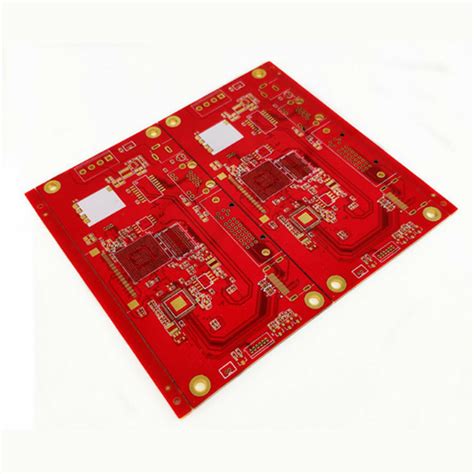
3. Advanced Techniques for Via Optimization
3.1 Via Tenting and Capping
Via tenting involves covering the via with solder mask to protect it from environmental factors and prevent solder wicking during assembly. Via capping, on the other hand, involves filling the via with a conductive or non-conductive material and then capping it with copper. Both techniques can improve reliability and manufacturability.
- Tenting: Tenting is useful for protecting vias from moisture and contaminants. It also prevents solder from flowing into the via during assembly, which can cause voids or incomplete fills.
- Capping: Capping is often used in via-in-pad designs to create a flat surface for component mounting. It also improves thermal and electrical performance by providing a continuous conductive path.
3.2 Via Plugging
Via plugging involves filling the via with a non-conductive material, such as epoxy, to create a flat surface. This technique is commonly used in via-in-pad designs to prevent solder from flowing into the via during assembly. Plugged vias also improve thermal and mechanical stability.
3.3 Via-in-Pad Design
Via-in-pad design involves placing vias directly in the component pads. This technique is commonly used in HDI designs to save space and improve signal integrity. However, it requires careful design to avoid soldering issues, such as voids or incomplete fills. Here are some tips for optimizing via-in-pad design:
- Via Fill: Use conductive or non-conductive via fill to create a flat surface for component mounting. This prevents solder from flowing into the via during assembly.
- Solder Mask: Apply solder mask over the via-in-pad to prevent solder wicking. Ensure that the solder mask is properly aligned and has the correct thickness.
- Thermal Relief: Use thermal relief pads to reduce the thermal mass around the via-in-pad. This helps to ensure proper soldering and prevents thermal stress.
3.4 Back-Drilling
Back-drilling is a technique used to remove the unused portion of a through-hole via, known as the stub. This is particularly important in high-speed designs, where the stub can act as an antenna, causing signal reflections and degrading signal integrity. Back-drilling involves drilling out the stub after the initial via plating process.
- Stub Length: The length of the stub should be minimized to reduce its impact on signal integrity. The ideal stub length is zero, but in practice, a stub length of less than 10 mils is acceptable for most high-speed designs.
- Drilling Accuracy: Back-drilling requires high precision to avoid damaging the functional portion of the via. Ensure that the drilling process is carefully controlled and that the drill bit is properly aligned.

4. Simulation and Testing
Once the via design is optimized, it is essential to validate it through simulation and testing. Signal integrity, power integrity, and thermal performance can be simulated using specialized software tools. Physical testing, such as thermal imaging and signal integrity testing, can also provide valuable insights into the via’s performance.
- Signal Integrity Simulation: Use tools like SPICE or electromagnetic simulation software to analyze the impact of vias on signal integrity. Look for impedance mismatches, reflections, and crosstalk.
- Power Integrity Simulation: Simulate the power delivery network to ensure that the vias provide adequate current-carrying capacity and minimize voltage drops.
- Thermal Simulation: Use thermal simulation tools to analyze the heat dissipation through vias. Ensure that the vias can handle the thermal load without causing hotspots.
- Physical Testing: Perform physical tests, such as thermal imaging and signal integrity testing, to validate the simulation results. Make adjustments to the via design as needed based on the test results.
5. Conclusion
Optimizing PCB via design is a complex but essential task that requires careful consideration of signal integrity, power integrity, manufacturability, and thermal management. By understanding the different types of vias and their roles in PCB design, and by applying the strategies and techniques outlined in this article, designers can create high-performance, reliable, and manufacturable PCBs. Advanced techniques such as via tenting, capping, plugging, and back-drilling can further enhance via performance, while simulation and testing provide the necessary validation to ensure that the design meets its requirements. With the right approach, PCB via design can be optimized to meet the demands of even the most challenging electronic applications.

